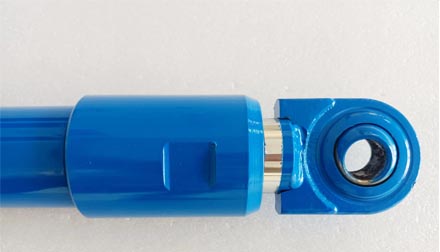Dec . 05, 2024 14:38 Back to list
China Hydraulic Cylinders for Telescoping Applications in Heavy Machinery and Equipment
The Advancements and Significance of Telescoping Hydraulic Cylinders in China
In recent years, China has emerged as a global leader in manufacturing, with advancements in technology and engineering underscoring its growing dominance across various sectors. One notable component that has seen significant innovation and application within the Chinese market is the telescoping hydraulic cylinder. This remarkable device is integral to numerous industries, including construction, automotive, aerospace, and shipbuilding, where powerful, reliable, and space-saving mechanisms are essential.
What is a Telescoping Hydraulic Cylinder?
A telescoping hydraulic cylinder consists of multiple nested cylinders, allowing for a greater extension to retraction ratio compared to traditional hydraulic cylinders. The design maximizes the amount of linear movement achievable within a compact space, making it ideal for applications requiring high load capacity and limited structural space. This unique feature enables equipment to achieve significant lifting and pushing power while maintaining a manageable size, essential for modern efficiency.
Applications in Various Industries
1. Construction Industry In construction, telescoping hydraulic cylinders are utilized in equipment like excavators, cranes, and lift platforms. They provide the necessary power to extend arms and booms, facilitating precise control and maneuverability. This level of efficiency translates into faster project completion times and improved safety on job sites.
2. Automotive Sector Within the automotive industry, these hydraulic cylinders are commonly used in car lifts and hydraulic jacks, enabling vehicle maintenance and repair tasks. Their compact yet powerful design allows workshops to optimize space while still providing heavy lifting capabilities.
3. Aerospace In the aerospace sector, telescoping hydraulic cylinders are essential for deploying landing gear and adjusting wing configurations. The reliability and precision of these cylinders are critical for ensuring the utmost safety and performance in flight operations.
4. Marine Applications The marine industry employs these hydraulic systems to operate ramps, lifts, and other movable components of ships and submarines. The corrosion-resistant materials used in manufacturing these cylinders are crucial for their longevity in harsh marine environments.
china telescoping hydraulic cylinder

The Competitive Edge in Manufacturing
China's unique position in the global market stems from its extensive investment in research and development, leading to innovations in hydraulic technology. Chinese manufacturers have adopted state-of-the-art production techniques, including computer-aided design (CAD) and advanced robotics, to improve efficiency and precision. Furthermore, the country has established comprehensive quality control measures that align with international standards, enhancing the reliability of its telescoping hydraulic cylinders.
Additionally, with significant state support for infrastructure and industrial development, Chinese firms are better positioned to produce hydraulic cylinders at competitive prices, catering to both domestic and international demand. The rise of automation and smart manufacturing practices plays a pivotal role in streamlining production processes and reducing costs.
Environmental Considerations
As global awareness of environmental issues grows, the hydraulic cylinder manufacturing sector in China is also pivoting towards sustainability. Manufacturers are increasingly focusing on producing energy-efficient hydraulic systems that minimize energy loss. Additionally, the use of eco-friendly materials and adherence to environmental regulations are becoming priority considerations.
Future Trends
The future of telescoping hydraulic cylinders appears promising, particularly with the advent of digital technologies and smart systems. The integration of the Internet of Things (IoT) in hydraulic systems allows for real-time monitoring and predictive maintenance, enhancing operational efficiency and reducing downtime. Moreover, as industries continue to evolve, the demand for customized hydraulic solutions tailored to specific applications is likely to increase.
Conclusion
In conclusion, the advancements in telescoping hydraulic cylinder technology in China have positioned the country as a significant player in the global market. With applications spanning multiple industries and a commitment to innovation and sustainability, these hydraulic systems exemplify the intersection of engineering excellence and practical utility. As China continues to focus on technology and quality, the impacts of these advancements will be felt worldwide, establishing a new standard for hydraulic systems globally.
-
Fork Lift Power Units - Hebei Shenghan | Efficiency, Reliability
NewsJul.13,2025
-
1.5-Ton Turbocharged Cylinder-Hebei Shenghan|Hydraulic Solution,Energy Efficiency
NewsJul.13,2025
-
Auto Hoist Power Units-Hebei Shenghan|Efficiency&Industrial Lifting
NewsJul.13,2025
-
Double Acting Power Units-Hebei Shenghan|Hydraulic Solutions,Industrial Efficiency
NewsJul.13,2025
-
1.5 Ton Lifting Cylinder 70/82-40-290-535 - High-Performance Hydraulic Solution | Hebei Shenghan
NewsJul.13,2025
-
Fork Lift Power Units - Hebei Shenghan | Efficiency&Reliability
NewsJul.13,2025
